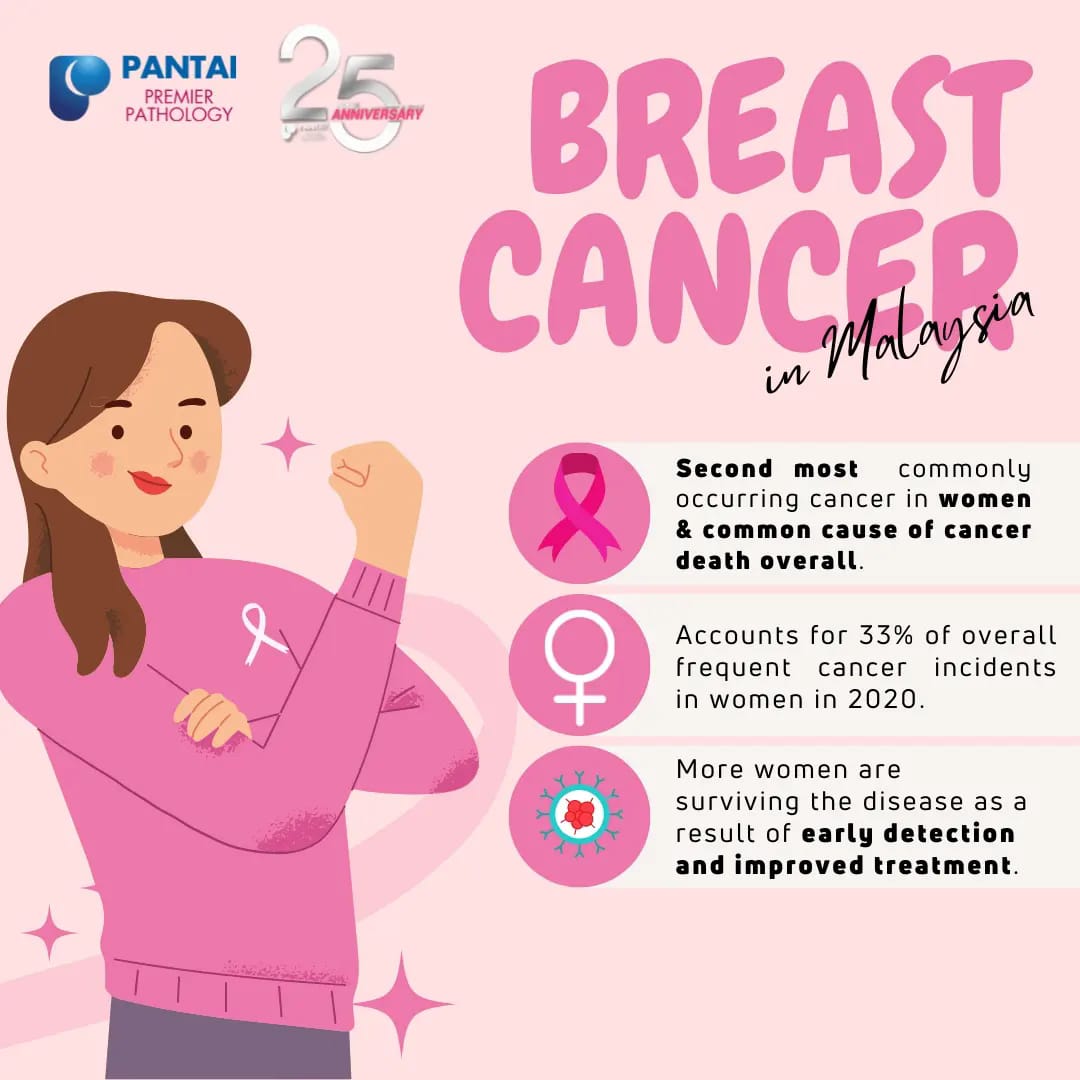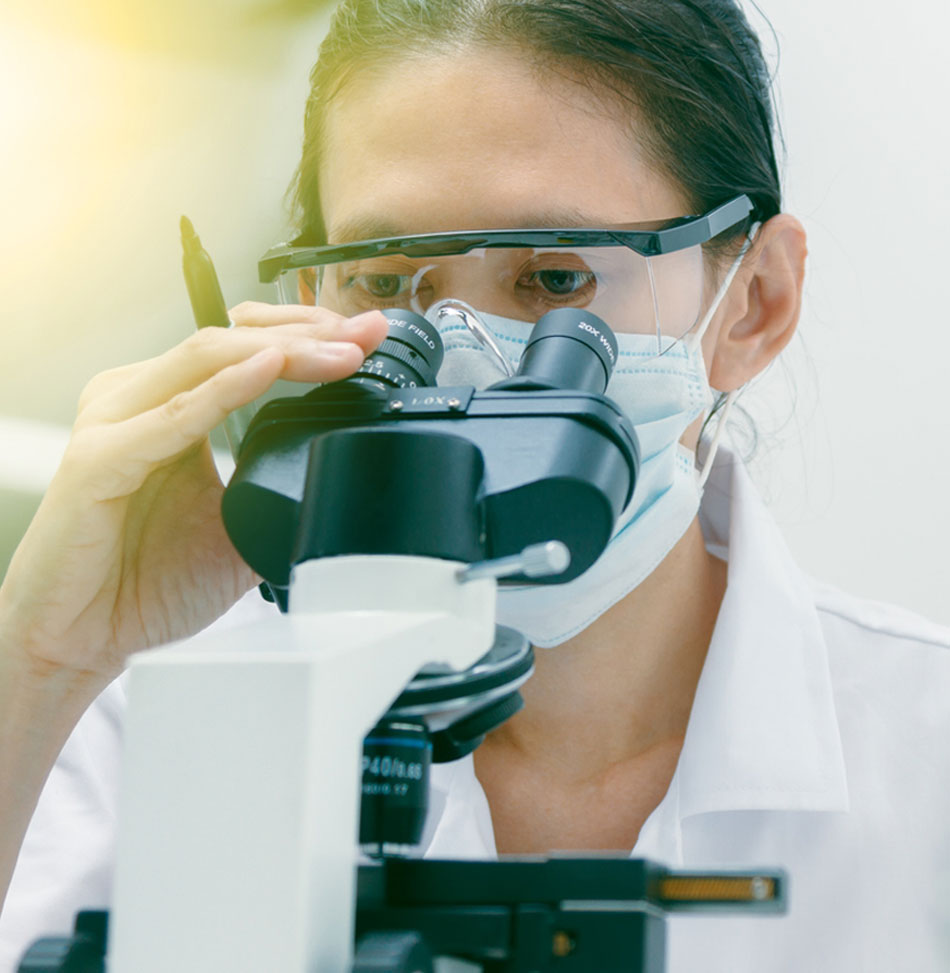Breast Cancer: Risk Factors, Staging and Advanced Breast Cancer Subtypes
It’s PINKtober! October is an annual breast cancer awareness month, an annual campaign to raise awareness on the impact of breast cancer which aims to prevent breast cancer-related deaths in women across the world.
Breast Cancer in Malaysia
In Malaysia, breast cancer is the most commonly occurring cancer in women and the second most common cause of cancer death overall. It accounts for close to 33 percent of the overall frequent cancer incidents in women in 2020. The risk of breast cancer increases with age.1 The good news is that more women are surviving the disease as a result of early detection and improved treatment.
Why does one get breast cancer?
The causes of breast cancer are not fully understood and no one knows for certain why one may develop the disease. However, several risk factors affect the likelihood of developing the disease.2
Risk factors include:
| Aging | Being on hormone replacement therapy (HRT) |
| Family History | Being overweight or obese |
| Previous breast cancer or lump | Drinking too much alcohol |
| Dense breast tissue |
Breast Cancer Staging
When someone is diagnosed with breast cancer, doctors will assess to determine if cancer has spread and to what extent. This process is called staging. The stage of cancer determines how severe the cancer is and how best to treat it.3
Doctors may refer to Stage 1 cancer as “early stage” and Stage II to Stage III as “locally advanced”.4 Stage IV is the most “advanced stage” of breast cancer also known as advanced breast cancer (aBC) as it spreads (metastasizes) from its original location in the breast, past the nearby lymph nodes, to other body organs. About 30% of women diagnosed with early-stage breast cancer will develop metastatic disease.5
Advanced Breast Cancer (aBC) Subtypes
| Luminal A | Triple Negative | Luminal B | HER2-enriched |
| 73% of all breast cancer cases | 13% of all breast cancer cases | 10% of all breast cancer cases | 5% of all breast cancer cases |
| HR+/HER2- | HR-/HER2- | HR+/HER2+ | HR-/HER2+ |
HR = Hormone Receptor
HR + means tumor cells have receptors for the hormones estrogen or progesterone, which can promote the growth of HR+ tumors.
HER2 = Human epidermal growth factor receptor
HER2 + means tumor cells overexpress (produce high levels of) a protein, called HER2/neu, which has been shown to be associated with certain aggressive types of breast cancer.
Know Your Subtype
Knowing your breast cancer subtype can help determine your treatment and predict survival. Your doctor may perform laboratory tests such as biomarker testing to determine your subtype. A biomarker may be found or measured by testing blood (plasma) or tissue. It helps your doctor know which treatments might work best for that specific cancer type by:
✓ Guiding treatment decisions
✓ Predicting how the cancer may respond to treatment
✓ Determining how cell treatment is working
✓ Signaling if the cancer is returning
In PINKtober, we aim to create widespread awareness on breast cancer so that the disease can be diagnosed and treated at early stages.
Treatment recommendations are tailored and personalized and depend on several factors such as the stage of the tumor, tumor’s subtype, genomic markers, patient’s age, menopausal status, and the presence of BRCA1 or BRCA2 mutations. Some tests for breast cancer that can help your specialists make informed decisions that can be done at PPP are BRCA1&2, HER2 FISH, Homologous Recombinant Repair (HRR), PIK3CA Test and more.
For more information on the tests provided, please contact us at +603-42809115 (Customer Service) or email us at info@premierpathology.com.my
References
1- International Agency for Research on Cancer. (2020). Malaysia. [Fact Sheet]. World Health Organization (WHO) https://gco.iarc.fr/today/data/factsheets/populations/458-malaysia-fact-sheets.pdf
2- NHS website. (2022, June 1). Causes. nhs.uk. https://www.nhs.uk/conditions/breast-cancer/causes/
3- Stages of Breast Cancer | Understand Breast Cancer Staging. (n.d.). Retrieved October 25, 2022, from https://www.cancer.org/cancer/breast-cancer/understanding-a-breast-cancer-diagnosis/stages-of-breast-cancer.html
4- Breast Cancer – Stages. (2022, May 24). Cancer.Net. https://www.cancer.net/cancer-types/breast-cancer/stages
5- Metastatic Breast Cancer. (n.d.). Retrieved October 25, 2022, from https://www.breastcancer.org/types/metastatic




